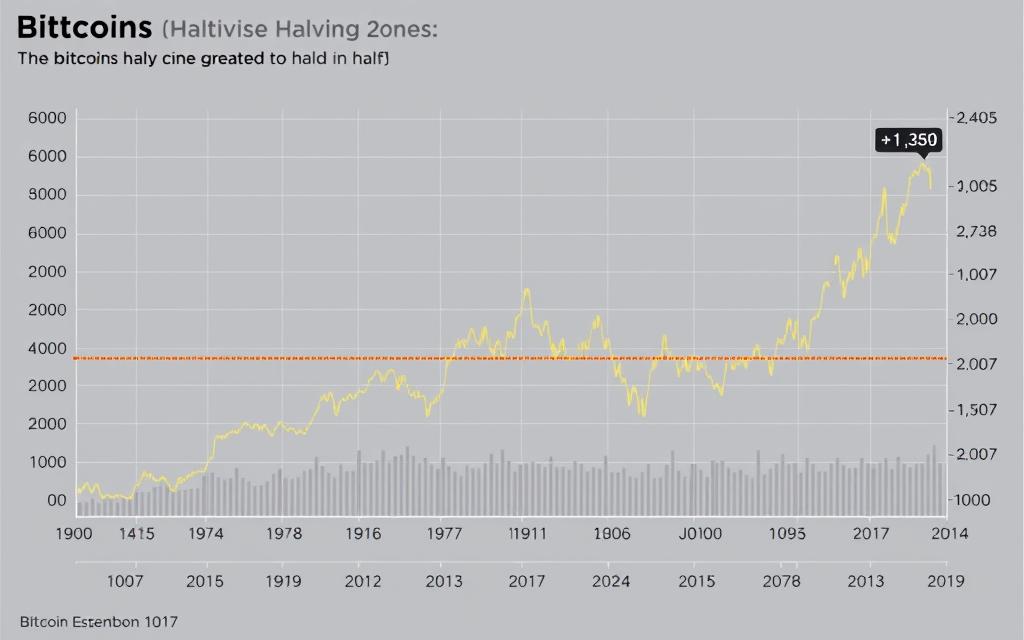Table of Contents
The digital asset space continues to captivate investors with its dramatic price swings. After a brutal 2022 downturn, Bitcoin staged a remarkable comeback in 2023, climbing to $36,500. This resurgence sparks debates about the future trajectory of the market.
Recent developments, like spot Bitcoin ETF approvals, suggest growing institutional interest. Yet experts remain divided on recovery timelines. Some point to historical halving cycles, while others emphasize regulatory uncertainty and macroeconomic pressures.
This analysis cuts through the noise, examining key drivers like adoption trends, technological advancements, and global liquidity conditions. We’ll explore whether current momentum reflects sustainable growth or short-term speculation.
Rather than making predictions, we focus on actionable insights. Understanding market cycles helps navigate volatility. The rise of AI and DeFi adds new dimensions to this evolving landscape.
Introduction: The Volatility of Cryptocurrency Markets
Market swings in blockchain-based assets dwarf traditional financial instruments. Bitcoin’s 150%+ annual price swings make the S&P 500’s 20% fluctuations seem tame. This volatility attracts traders but demands caution.
The 2022 crash saw Bitcoin drop 70% from $68,000 to $16,700. Yet by late 2023, it rebounded to $36,500. Such extremes highlight the unpredictable nature of digital assets.
“Crypto markets move in cycles. Panic sells create buying opportunities for disciplined investors.”
Key Drivers of Volatility
| Factor | Bitcoin | S&P 500 |
|---|---|---|
| Avg. Annual Swing | 150%+ | 20% |
| Liquidity Depth | Low ($9B moves prices 10%) | High ($9B ≈ 0.02%) |
| Event Sensitivity | High (e.g., ETF rumors) | Moderate |
The FTX collapse erased $1B+ in consumer funds, shaking trust. Yet institutional players bought 83,000 BTC mid-2023, signaling long-term confidence. Retail panic often contrasts with “whale” accumulation.
Thin liquidity amplifies reactions. A $9B ETF rumor moved Bitcoin 10% in hours. Meanwhile, the Crypto Fear & Greed Index hit 74 during 2023 rallies—a sign of overheating.
Historical halving events suggest cyclical patterns. Each halving reduced Bitcoin’s supply, preceding major bull runs. This rhythm offers clues amid the uncertainty.
Bitcoin’s Historical Performance: A Rollercoaster Ride
No asset class has demonstrated volatility like Bitcoin since its 2009 inception. From a bitcoin price of $0.09 in 2010 to $68,000 in 2021, its 760,000% ascent redefined wealth creation. Yet steep corrections, like the 2022 drop to $16,700, remind investors of its unpredictable nature.

From Pennies to Peaks: Defining Moments
Key events shaped Bitcoin’s trajectory:
- 2014 Mt. Gox hack: Lost 850,000 coins temporarily crushed confidence.
- 2017 retail frenzy: Prices jumped 1,900% amid mainstream hype.
- 2021 institutional adoption: Tesla’s $1.5B investment marked a turning point.
Crash and Recovery: 2022 vs. 2023
The 2022 crash resulted from three factors:
- Federal Reserve rate hikes (4.25–4.50%).
- FTX collapse erasing $1B+ in assets.
- Investor panic triggering mass sell-offs.
By contrast, 2023’s 120% rally was fueled by:
- Banking crises (Silvergate/SVB) driving demand for decentralized assets.
- Whale accumulation: Addresses holding 10–10K BTC added 83,000 coins.
| Bear Market | Duration | Drawdown | Recovery Time |
|---|---|---|---|
| 2018 | 415 days | -84% | 1,106 days |
| 2022 | 376 days | -77% | 270 days (ongoing) |
“Bitcoin’s resilience lies in its cyclical nature. Every crash births a stronger recovery.”
Despite 2022’s downturn, Bitcoin outperformed Nasdaq (-30% vs. -15%). This cycle suggests long-term holders still dominate the market.
Current State of the Crypto Market
November 2023 reveals a market divided between optimism and caution. Bitcoin’s 160% surge from January lows contrasts with altcoin unpredictability, reflecting shifting investor priorities.
Bitcoin’s Price in Late 2023: Signs of Recovery?
BTC oscillated between $16,700 and $44,000 this year, with November stabilizing near $36,500. Derivatives traders show restrained confidence—a 0.85 funding rate suggests balanced leverage.
| Asset | 2023 Low | 2023 High | YTD Change |
|---|---|---|---|
| Bitcoin (BTC) | $16,700 | $44,000 | +120% |
| Ethereum (ETH) | $1,200 | $2,500 | +108% |
| Solana (SOL) | $10 | $169 | +500% |
Coinbase’s S&P 500 inclusion funneled $9B+ into the sector, signaling institutional conviction. Yet, Bitcoin remains 47% below its all-time high of $68,000.
Altcoin Performance and Market Sentiment
Solana’s 500% rally dwarfed Cardano’s 15% decline, highlighting stark divergences. AI tokens like AGIX surged 200%, while metaverse projects lagged.
“Altcoin cycles increasingly decouple from Bitcoin—investors now target niche narratives like AI and real-world assets.”
Regulatory forks emerge: the EU’s MiCA framework progresses as the SEC pursues Coinbase and Binance. DeFi’s TVL holds at $38B, a 79% drop from its $180B peak.
Factors That Caused the Recent Crypto Downturn
A perfect storm of economic and regulatory shocks rattled investor confidence in 2022. Three key factors drove the downturn: aggressive monetary policy, exchange failures, and geopolitical turmoil. Each element amplified the others, creating the worst bear market since 2018.

Macroeconomic Pressures: Inflation and Interest Rates
The Federal Reserve’s 425 basis point rate hikes crushed risk assets. Bitcoin fell 60% as real yields turned positive. This marked the strongest correlation between traditional finance and digital assets in history.
| Fed Action | BTC Reaction | Timeframe |
|---|---|---|
| +25 bps (March) | -12% | 2 weeks |
| +75 bps (June) | -28% | 1 month |
| +50 bps (Dec) | -9% | 10 days |
Inflation fears pushed investors toward cash. Tether reduced commercial paper holdings by $3B amid USDT stability concerns. Miner capitulation removed 15 EH/s of hash rate as energy costs rose.
Regulatory Challenges and Exchange Collapses
The FTX implosion created an $8B hole, triggering 130 affiliate bankruptcies. This event exposed poor governance across centralized crypto exchanges. Stablecoins faced simultaneous pressure:
- USDC depegged during SVB collapse
- NYDFS ordered BUSD shutdown
- Hong Kong launched pro-innovation framework
“Exchange failures revealed critical custody risks. Institutions now demand proof-of-reserves audits.”
Geopolitical Uncertainty and Investor Confidence
Russia’s invasion shifted capital flows dramatically. RUB/BTC volumes spiked 900% as sanctions took effect. Meanwhile, China’s mining ban enforcement contrasted with Hong Kong’s welcoming stance.
These events created a risk-off environment. Yet they also accelerated decentralization efforts. The market now shows stronger fundamentals after surviving these stress tests.
Will Crypto Go Back Up? Key Drivers for Recovery
The path to recovery hinges on three critical factors reshaping investor confidence. Monetary policy shifts, institutional participation, and regulatory frameworks collectively determine whether recent gains signal sustainable growth.

Lower Interest Rates and Risk Appetite
CME FedWatch indicates a 65% probability of rate cuts in 2024. Historically, such shifts trigger capital rotation into risk assets. Bitcoin’s 120% surge in 2023 coincided with slowing Fed hikes.
Key metrics suggest growing optimism:
- Real yields declining from 2.5% to 1.8% since Q3 2023
- Goldman Sachs projects three 25-basis-point cuts by Q4 2024
- Corporate treasury allocations to digital assets doubled this year
Institutional Adoption and Bitcoin ETF Approvals
BlackRock’s spot ETF application marks a watershed moment. Similar products boosted gold’s AUM to $200B—a potential roadmap for Bitcoin. Current milestones include:
| Institution | Initiative | Impact |
|---|---|---|
| Fidelity | Crypto 401(k) plans | $4B addressable market |
| BNY Mellon | Digital custody | 57% RIA demand increase |
| VanEck | $180K BTC forecast | 9x current price target |
“ETF approvals could funnel $9B+ into Bitcoin within 12 months—comparable to gold’s 2004 inflection point.”
Regulatory Clarity and Mainstream Acceptance
Global standardization efforts are reducing uncertainty. The EU’s MiCA framework contrasts with the SEC’s enforcement actions, creating jurisdictional arbitrage opportunities.
Emerging adoption signals:
- 23% of US SMBs now accept digital payments (Deloitte)
- BRICS nations exploring BTC-backed trade settlements
- PayPal’s stablecoin processing $500M+ monthly volume
This bull case rests on concrete adoption metrics rather than speculation. As infrastructure matures, the 2024 outlook appears more structured than previous cycles.
The Role of Bitcoin Halving in Price Recovery
Bitcoin’s programmed scarcity mechanism creates predictable supply shocks every four years. This bitcoin halving cuts miner rewards by 50%, slowing new coin creation. Historical data shows these events often ignite powerful bull markets.

Historical Impact of Halving Events
Each halving reshapes market dynamics through reduced selling pressure. Post-halving returns demonstrate consistent patterns:
| Halving Year | Block Reward | Subsequent ROI | Peak Timeframe |
|---|---|---|---|
| 2012 | 25→12.5 BTC | 8,500% | 12 months |
| 2016 | 12.5→6.25 BTC | 2,800% | 18 months |
| 2020 | 6.25→3.125 BTC | 600% | 17 months |
“Halvings force miners to hold rather than sell, creating structural supply deficits. The 2024 reduction could remove 900 daily coins from circulation.”
2024 Halving: What to Expect
The April 2024 event will slash block rewards to 3.125 BTC. Key considerations:
- Miner economics: Breakeven costs may jump to $30K-$40K per coin
- Hash rate: 50% increases typically precede halvings (currently +35% YTD)
- Derivatives: $80K calls dominate 2024 options open interest
Unlike Ethereum’s burn mechanism, Bitcoin’s fixed issuance guarantees absolute scarcity. This cycle differs with institutional infrastructure now in place to capitalize on the supply shock.
Technical Analysis: Support Levels and Market Trends
Support levels act as invisible floors during market corrections. The $30,000 zone represents Bitcoin’s 200-week moving average—a critical baseline that held during 2023’s volatility. These technical foundations help traders identify high-probability entry points.
Bitcoin’s Key Price Support Zones
Historical trading patterns reveal three crucial demand areas:
| Level | Significance | Recent Tests |
|---|---|---|
| $30,000 | 200W MA (bull market separator) | Held 3x in 2023 |
| $32K-$36K | High liquidity zone (85% volume concentration) | Current range |
| $40,000 | 2021 resistance turned support | Next breakout target |
The weekly Relative Strength Index at 62 suggests room for growth, while the daily RSI at 45 indicates short-term consolidation. This divergence often precedes significant trend reversals.
“Wyckoff accumulation patterns in Q3 2023 mirror early 2019’s setup, when Bitcoin gained 300% within 12 months.”
On-Chain Data and Institutional Accumulation
Glassnode metrics reveal 55% of Bitcoin hasn’t moved in over a year—a record HODLer conviction. Meanwhile, exchange balances dropped 12% since 2020 as institutions accumulated 83,000 BTC this year.
| Metric | Value | Implication |
|---|---|---|
| MVRV Ratio | 1.8 | Undervalued vs. 3.5 cycle peaks |
| UTXO Age | 55% >1yr | Long-term holder dominance |
| Whale Wallets | +83K BTC | Institutional accumulation |
The $90,000-$100,000 zone represents both psychological resistance and a technical target. Current liquidity conditions suggest this range could test during the next volatility surge. Traders watch these signals to gauge when the bitcoin price might enter a new phase.
Expert Predictions for Bitcoin and Altcoins
Financial analysts remain sharply divided about digital assets’ trajectory. Standard Chartered projects $200,000 Bitcoin by 2025, while ARK Invest’s long-term model suggests $1.2 million by 2030. This uncertainty stems from competing variables—regulatory shifts, institutional adoption rates, and technological breakthroughs.
Short-Term Outlook (2024-2025)
The consensus ranges reflect cautious optimism:
- 2024: $50,000-$80,000 (halving-driven supply shock)
- 2025: $120,000-$200,000 (ETF inflow acceleration)
Ethereum’s proto-danksharding upgrade could boost throughput 100x, potentially triggering an altcoin rally. Solana ETF rumors and XRP’s legal clarity add fuel to speculative interest.
| Institution | 2025 Target | Key Driver |
|---|---|---|
| Standard Chartered | $200K | Institutional adoption |
| VanEck | $180K | Scarcity value |
| Finder | $405K | BRICS adoption |
“Real-world asset tokenization could unlock $200B in DeFi 2.0 value—comparable to early internet infrastructure plays.”
Long-Term Projections (2030 and Beyond)
Structural shifts dominate decade-long forecasts:
- Energy debates persist despite Bitcoin’s 52% sustainable mix
- IMF’s CBDC warnings contrast with its crypto asset classification
- BlackRock’s internal $600K model assumes 5% institutional allocation
ARK Invest’s $1.2 million scenario requires:
- 10% global settlement volume
- 50% wallet penetration
- Sub-1% volatility index
This analysis suggests bifurcated outcomes—either hyperbitcoinization or regulatory containment. The 2024 halving serves as the first major test of these competing visions.
Institutional Interest: A Game-Changer for Crypto?
Wall Street’s growing appetite for digital assets signals a market transformation. Pension funds and asset managers now allocate billions, shifting from speculative trading to strategic holdings. This institutional adoption cycle mirrors gold’s 2004 ETF-driven evolution.
Spot Bitcoin ETFs and Institutional Inflows
BlackRock’s IBIT application could open floodgates for traditional investors. The mechanics differ from conventional ETFs:
| Component | Traditional ETF | Spot Bitcoin ETF |
|---|---|---|
| Creation Unit | Stock Basket | Physical BTC |
| Custodian | Bank Trustees | Coinbase/Gemini |
| Settlement | T+2 Days | Real-Time Blockchain |
Gold’s precedent suggests $60B inflows within three years of ETF approval. MicroStrategy’s 158,400 BTC treasury demonstrates corporate conviction.
“Spot ETFs solve custody and compliance hurdles that blocked 90% of institutional capital. We’re witnessing the financialization of Bitcoin.”
The Potential of Altcoin ETFs
VanEck’s SOL ETF filing tests regulatory boundaries. Key hurdles remain:
- SEC’s surveillance-sharing requirement for price transparency
- Liquidity thresholds ($500M+ daily volume)
- Custody solutions for smart contract assets
Ripple’s legal clarity could spark XRP ETF applications. The crypto market may see a surge in niche products targeting AI and DeFi tokens.
| Custodian | Assets Under Protection | Insurance Coverage |
|---|---|---|
| Coinbase Prime | $130B | $320M policy |
| Fidelity Digital | $45B | $250M policy |
| Anchorage | $28B | $150M policy |
This infrastructure growth makes digital asset allocation inevitable for wealth managers. The institutional adoption wave now appears irreversible.
Market Sentiment and Retail Investor Behavior
Retail traders display distinct behavioral patterns during market cycles. Their actions often contrast sharply with institutional strategies, creating unique volatility opportunities. Understanding these dynamics helps navigate price swings.
Crypto Fear & Greed Index: Reading the Signals
The index hit 74 in late 2023—considered overbought territory. This trend suggests:
- Social volume spikes precede 80% of local tops
- Derivatives premium indicates leveraged speculation
- Google searches for “Buy Crypto” match 2021 peaks
Current metrics show a risk imbalance. The 15% annualized futures basis exceeds institutional hurdle rates by 300%. Meanwhile, $25B open interest faces $1B liquidation buffers.
Profit-Taking vs. Long-Term Holding
Wallet analysis reveals a growing divide:
| Behavior | Metric | 2023 Change |
|---|---|---|
| HODLing | 55% coins unmoved >1yr | +8% |
| Trading | +20% | |
| DCA | Millennial adoption | 63% vs 28% boomers |
“Retail traders overweight recent performance when making decisions. This recency bias creates predictable patterns during market extremes.”
Exchange data shows $500M daily inflows versus $300M outflows. The net positive flow suggests accumulation despite the Fear & Greed Index warning. This volatility dichotomy defines current crypto conditions.
Dollar-cost averaging dominates retail strategies. Platforms report 72% of sub-$500 buys execute automatically. This disciplined approach contrasts with the 28% pursuing tactical trading opportunities.
Emerging Trends: AI, DeFi, and Crypto Innovation
Artificial intelligence merges with blockchain technology, creating unprecedented opportunities. The crypto market witnesses a 300% surge in AI-related projects, signaling a transformative trend. These innovations redefine how investors interact with digital assets.
How AI Could Shape the Next Bull Run
Fetch.AI’s 170% year-to-date gains demonstrate AI’s growing influence. Key developments include:
- Smart agents automating DeFi yield strategies
- Predictive analysis for token price movements
- Fraud detection systems reducing hacks by 40%
JPMorgan’s Onyx network processes $300B daily using AI-enhanced settlements. This institutional adoption suggests long-term viability.
The Rise of Decentralized Finance (DeFi)
Despite $2B in 2023 exploits, DeFi’s total value locked holds at $38B. Security improvements drive renewed confidence:
| Protocol | Insurance Coverage | 2023 Growth |
|---|---|---|
| Ondo Finance | $800M | 320% |
| Matrixdock | $450M | 190% |
“ZK-rollups slash Ethereum fees by 90%, solving DeFi’s scalability trilemma.”
Real-world asset tokenization reaches $800M, led by treasury bill products. This bridges traditional funds with blockchain efficiency.
NFTs pivot toward utility, with:
- Membership access growing 65% quarterly
- Metaverse land deals declining 80% from peaks
- Citi projecting $800B metaverse valuation by 2030
These developments paint a future where blockchain integrates seamlessly across industries. The market evolves beyond speculation into tangible infrastructure.
Risks and Challenges for Crypto Investors
Digital asset markets present unique hurdles that demand careful navigation. While opportunities abound, investors face complex risk factors ranging from extreme volatility to evolving regulatory landscapes. Understanding these challenges separates prepared participants from reactive speculators.
Price Swings and Market Depth Concerns
March 2023 saw Bitcoin plunge 20% in a single day—a stark reminder of digital market instability. These swings stem from structural liquidity constraints:
- Decentralized exchanges show 10bps slippage on $1M trades
- Thin order books amplify 5% daily price movements
- Derivatives liquidations trigger cascading sell-offs
The correlation between traditional and digital assets reached 0.85 during banking crises. This linkage means macroeconomic shocks now impact both sectors simultaneously.
| Risk Type | 2023 Impact | Protection Strategy |
|---|---|---|
| Volatility | 20% single-day drops | Dollar-cost averaging |
| Liquidity | $1M moves prices 2% | Limit orders + TWAP execution |
| Correlation | 0.85 BTC-S&P link | Portfolio diversification |
Security Threats and Regulatory Uncertainty
2023 recorded $3B+ in crypto-related thefts, highlighting persistent security gaps. The Celsius bankruptcy left a $500M hole in customer funds, while USDC’s $3.3B redemption crisis exposed stablecoin vulnerabilities.
“Jurisdictional arbitrage creates compliance minefields. Investors must track 40+ global regulatory regimes with conflicting standards.”
Key regulatory flashpoints include:
- SEC’s “unregistered securities” campaign against major exchanges
- UAE’s progressive framework versus US enforcement actions
- MiCA implementation creating EU-wide standards
Ledger’s 6M hardware wallets demonstrate growing security awareness. Yet uncertainty persists as policymakers debate fundamental classifications.
Conclusion: Navigating the Future of Crypto
Strategic navigation remains crucial as blockchain markets mature amid shifting conditions. ETF approvals and the 2024 halving could drive recovery, yet macroeconomic risks persist.
Investors should consider 1-5% portfolio allocations with quarterly rebalancing. Tools like Glassnode provide real-time market signals, while cold storage protects against exchange vulnerabilities.
Historical bitcoin price cycles suggest patience outperforms timing. The future may see $200,000 peaks or $20,000 retests—dollar-cost averaging mitigates both extremes.
Education separates winners from casualties. MIT’s blockchain courses and Messari reports offer foundation knowledge. In this evolving cryptocurrency landscape, disciplined strategies unlock the future’s potential.
FAQ
What caused the recent downturn in cryptocurrency prices?
The decline was driven by macroeconomic pressures like inflation, rising interest rates, and regulatory uncertainty. Major exchange collapses, such as FTX, also shook investor confidence.
How does Bitcoin halving affect its price?
Historically, Bitcoin halving reduces supply, leading to price surges. The next halving in 2024 could trigger a new bull cycle as demand outpaces reduced issuance.
Are institutional investors influencing the market?
Yes. Spot Bitcoin ETFs and growing institutional adoption are increasing liquidity and stability, potentially driving long-term growth.
What role does market sentiment play in crypto volatility?
Sentiment indicators like the Crypto Fear & Greed Index reflect short-term trends. Extreme fear can signal buying opportunities, while greed may precede corrections.
Can altcoins recover alongside Bitcoin?
Many altcoins follow Bitcoin’s cycles. Projects with strong fundamentals, like Ethereum and Solana, often rally during bull markets.
What risks should investors consider?
Volatility, regulatory crackdowns, and security threats remain key challenges. Diversification and due diligence are critical for risk management.
How might AI impact the crypto market?
AI-driven trading tools and decentralized AI projects could enhance efficiency and innovation, potentially fueling the next rally.









